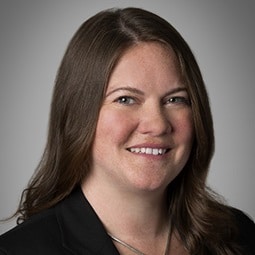Several months ago, we blogged about a series of Ninth Circuit decisions on section 1122(a) of the Bankruptcy Code and whether a debtor’s classification of certain unsecured claims separate and apart from all other unsecured claims constitutes gerrymandering, in direct contravention of the Bankruptcy Code.
In a recent decision by the United States Bankruptcy Court for the District of Alaska, In re Marlow Manor Downtown, LLC, No. A12-00421-HAR (Bankr. D. Alaska Oct. 9, 2013), Judge Ross held that the separate classification of a claim arising under a second-lien promissory note from various other non-insider unsecured claims was improper pursuant to section 1122 of the Bankruptcy Code.
The Promissory Notes
In an effort to save a historic multi-story building in Anchorage from being destroyed, Marc Marlow and others set out to renovate the building. The renovated building was to be used partly as studios and one-bedroom apartments and partly as senior assisted living units. The latter units remained property of the estate and were funded by two promissory notes issued by Alaska Housing Finance Corp. Marc Marlow was the co-maker of both promissory notes though, importantly, he is currently insolvent.
The first promissory note was in the amount of $4.125 million, with interest bearing at a rate of 7.375%, secured by the assisted living units and payable in equal installments over a 30-year term. AHFC indicated that it would make a section 1111(b)(2) of the Bankruptcy Code election in connection with AHFC’s claim pursuant to the first promissory note, and, therefore, AHFC’s claim with respect to the first promissory note was treated as entirely secured.
The second promissory note was in the amount $1.325 million with interest bearing at a rate of 1.5%. It, too, was payable in equal installments over a 30-year term, but with a balloon payment for any unpaid balance due at the maturation of the note. The second promissory note was payable in annual installments only out of a percentage of available cash flow from the assisted living unit project pursuant to a formula contained in the loan documents. Because the debtor never earned enough for the payments under the second promissory note to be due and payable, the debtor never made any payments pursuant thereto. Additionally, the first promissory note was cross-defaulted to the second promissory note.
Due to a series of economic events (including that the State of Alaska agency governing Medicaid subsidies backed out on a subsidy commitment, which would have helped provide significantly more funding for the assisted living unit project than ultimately approved), the debtor defaulted under the first promissory note, causing a cross default under the second promissory note. AHFC declared a default on the first promissory note, and the combined $5.45 million in debt owed to AHFC was valued at only approximately $2.7 million.
Classification of Unsecured Claims
The debtor’s proposed plan divided the claims of non-insider creditors into two classes providing that the claim in Class 4 (comprised of AHFC’s subordinated claim under the second promissory note) would be allowed as an unsecured claim in the amount of $250,000 and would be paid without interest in quarterly installments of $10,000 beginning on October 1, 2023. This class is impaired. Holders of claims in Class 6 (comprised of trade creditors and a debt holder with unsecured claims) would receive a distribution of $20,000 on the effective date of the plan, prorated in proportion to the allowed claims in this Class, and would further receive prorated payments of $10,000 per calendar quarter commencing October 1, 2013, for a period of five years, with the final payment to be made July 1, 2018. The debtor anticipated that it would be able to obtain a consenting vote from Class 6 but, seemingly, not from Class 4.
AHFC argued that the promissory note in Class 4 and the unsecured claims in Class 6 are substantially similar and that there were no business or economic reasons to treat them differently. Instead, AHFC attributed the separate classification to the debtor’s “transparent attempt to get a consenting class by gerrymandering.”
The debtor countered that the classification was appropriate because the claims are not substantially similar. Specifically, the debtor contended that the promissory note in Class 4 is “not ordinary debt; ordinary debt is due on demand or on a definite payment schedule without regard to the borrower’s ability to pay,” and while “[t]he creditors in Class 6 are all trade creditors, except for [a note claim], which is on a short term promissory note that matured according to its original terms.” By contrast, the debtor argued that the promissory note in Class 4 was only due if there was money available to pay it.” Accordingly, the note “has the character of a redeemable preferred stock or similar equity investment which receives a dividend only if the issuer has the ability to pay.” Moreover, the debtor suggested that AHFC should be conflated with the State of Alaska agency governing Medicaid subsidies and treated differently than other unsecured creditors because it is part of, or close to, a state agency that “lead the debtor down a primrose path into believing its assisted living proposal . . . would receive an adequate Medicaid subsidy” to be viable.
Court’s Analysis: Section 1122 and Ninth Circuit Precedent
The court began its analysis by noting that “[o]nly claims which are substantially similar can be placed in the same class.” It also observed that “claims that are substantially similar can, however, be placed in different classes, but subject to some court imposed restrictions.” Section 1122 of the Bankruptcy Code, which governs classification of claims and interests, provides as follows:
(a) Except as provided in subsection (b) of this section, a plan may place a claim or an interest in a particular class only if such claim or interest is substantially similar to the other claims or interests of such class.
(b) A plan may designated a separate class of claims consisting only of every unsecured claim that is less than or reduced to an amount that the court approves as reasonable and necessary for administrative convenience.
The court went on to discuss the Ninth Circuit cases In re Johnston and In re Barakat, among others. The court concluded that the principles set forth in Barakat controlled and that AHFC’s claim pursuant to the second promissory note was improperly separately classified from other unsecured claims.
In Johnston, the Ninth Circuit upheld the bankruptcy court’s finding that the nature of the creditor’s claim at issue (a contested unsecured claim that was subject to offset and partially secured by assets of a nondebtor) warranted separate classification. In Johnston, the possibility of success in an underlying litigation and the existence of partial non-estate collateral were sufficient to justify separate classification. In contrast to the creditor in Johnston, which had guarantors from which to collect, Marc Marlow, the co-maker on the second promissory note, was not personally solvent and had many unpaid money judgments against him. Moreover, the promissory note was wholly unsecured unlike the partially secured claim in Johnston.
Barakat, another Ninth Circuit case, involved an apartment building valued at $4 million, which was encumbered by a claim of $4.6 million. The debtor’s plan proposed to classify the $600,000 deficiency separately from several other classes of unsecured creditors, including trade creditors. In Barakat, the court similarly recognized the principles outlined above: (1) similar claims can be classified separately, (2) separate classification may not be “condoned in order to gerrymander an affirmative vote on a reorganization plan,” and (3) if claims are substantially similar, there must be a valid business reason for separate classification. The Barakat court held that the right to make a section 1111(b)(2) election was not a valid reason to separately classify the claim.
Pursuant to the principles outlined in Barakat, the court held that AHFC’s claim under the second promissory note was more akin to a garden variety unsecured claim, notwithstanding its “easy terms.” The court cited the following reasons in support of its conclusion: (1) section 502(b)(1) makes the claim presently allowable despite being an unmatured claim, the balance of which is due in 2037; (2) under the terms of the loan agreement governing the promissory note, the note can be accelerated due to the default under first promissory note; and (3) even if the second promissory note had been nonrecourse (which it was not), in chapter 11, it is treated as a recourse claim. Accordingly, there was no justification for separately classifying AHFC’s claim pursuant to the second promissory note from other general unsecured claims.
With respect to the debtor’s contention that the note was similar to an equity contribution, justifying its separate classification, the court found little similarity between the tax cases cited by the debtor and the classification at issue here. While courts consider several factors in determining whether certain payments to a corporation should be treated as capital contributions as opposed to loans, the court found, without much analysis, that the claim at issue was “undeniably” an unsecured claim and not a capital contribution.
Finally, as to the debtor’s argument that AHFC should be conflated with the State of Alaska agency governing Medicaid subsidies and be treated differently than other general unsecured creditors, the court found that the debtor had not provided sufficient legal or factual analysis to support such conclusion. Finding that the separate classification of Class 4 and Class 6 were not justified under Barakat, the court did not approve the debtor’s disclosure statement and gave the debtor three days to file an amended disclosure statement and plan.
Conclusion
In re Marlow Manor Downtown, LLC joins in a long line of Ninth Circuit precedent in emphasizing the limitations of section 1122 and providing a stern reminder to debtors: Not only may the scope of the terms “substantially similar” dictate plan confirmation, but so too may the scope of the limited scenarios in which substantially similar claims may be separately classified. At least in the Ninth Circuit, superficial justifications for the separate classification will not suffice.
Contributor(s)





















